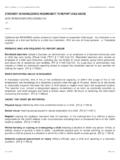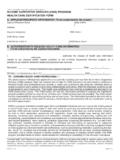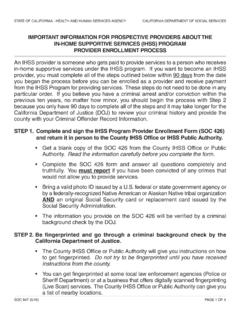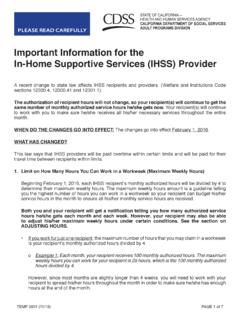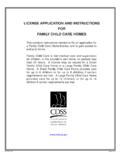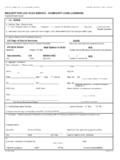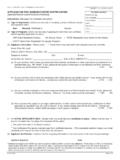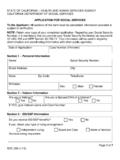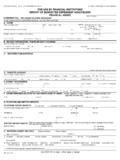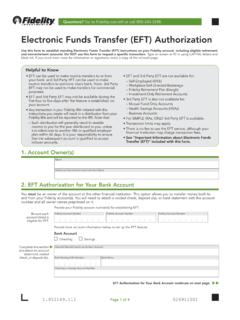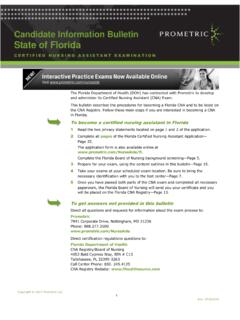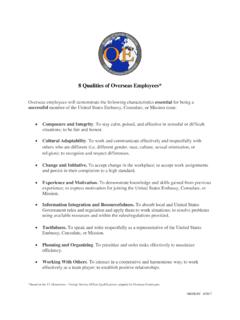Transcription of THE HOME VISIT CHECKLIST - California Department of …
1 THE HOME VISIT CHECKLIST Before the VISIT : o Set up appointment by letter or phone. o Check for current Medi-Cal eligibility in Meds. o Prepare paperwork packet - check if income eligible or status eligible. This will tell you what kind of forms you will need. o Make sure you have the Health Care Certification Form (SOC 873) for the consumer to complete as it is a requirement for obtaining IHSS services. o Arrange for an interpreter, if needed. o Have forms semi-completed before you arrive at the appointment. o Familiarize yourself with the person's illness or diagnosis - check for contagious diseases. o Familiarize yourself with case. Review narrative notes from last home VISIT and any notes documenting phone calls to identify any potential issues that will need to be addressed during the home VISIT . Make notes to take with you or copy information, if necessary.
2 O Pay special attention to safety alelis, , dogs, illegal activity expected, mental health issues. o Make any contacts ( , APS, etc.) that you feel will help you do a thorough assessment or answer questions that you may have. o If indicated, get input or discuss concerns with supervisor or peers. o Ifpossible, review time sheets or CMIPS screens to determine if the provider has been submitting timesheets for all authorized hours. o Prepare a map. During the VISIT : o Introduce yourself, show your ID. o On entry into the home, be sure to inquire as to who is currently present in the home. o Ask for permission to be seated. This gives them control early on and helps with rapport building. o Explain the purpose of the VISIT . o Observe consumer's abilities. This should begin with observing how the consumer greets you and continue until the interview is concluded. o Observe environmental safety issues ( , throw rugs, lack of handrails, availability of DME, etc.)
3 O Conduct needs interview: .:. Give civil rights pamphlet (pub 13) . :. Complete Emergency Back-up plan . :. Review medications . :. Explain rights and responsibilities . :. All other county and state forms, if applicable. o If the consumer is new to IHSS, inform him/her regarding the steps required to hire a provider and how they get paid. If this is a reassessment, check with the consumer about how well things are going with the provider. Make appropriate referrals to the Public Authority if the provider needs training or if the consumer wants to change the provider. o Before leaving, tell the consumer what to expect next: .:. S/he will receive a NOA . :. Discuss significant changes in authorization , but do not commit to a new service plan while at the home VISIT . IHS S Training Academy Core: IHSS 101 1 9110/12 Best Practices (not in regs): o View all rooms in the home utilized by the consumer (if reassessing, check that assessed chores are being completed).
4 O Note DMEs that will improve the safety of the client. o Suggest/make referrals as needed. o Assess the need to make referrals. Cleanse your hands immediately following every VISIT . Take precautions while transporting forms that contain consumer information per your county's policy. IllS S Training Academy Core: IHSS 101 2 9/1 0112 PERSONAL SAFETY TIPS FOR HOME VISITING General Tips: I Pay attention to intuitive feelings. Be alert to your surroundings. Anticipate potential problems. Keep a list of your credit card numbers in a safe place. Carry only enough money to get through the day. Maintain your car;. Make sure you have enough gas. Carry a cell phone. Obtain any history of clients to be visited ( , chemical abuse, history of violence, criminal activity, non-compliance with medication, violent or criminal family members, etc.) Appearance is Everything: I Dress practically.
5 Wear clothing that allows you to move freely and wear comfortable walking shoes. Avoid wearing expensive jewelry or accessories. Walk with confidence and purpose - head up, eyes forward. Keep your purse or wallet out of sight or lock them in the trunk. Keep car keys handy at all times. Protect Your Health: I Learn about any situations that might jeopardize your health. Use universal health precautions. Carry sanitary wipes or antibacterial lotion. Know Where You Are Going: I Plan your route and carry maps. Learn about the neighborhood you will be visiting. Go with assistance if you're concerned (law enforcement or another social worker). Consider asking law enforcement to do a "Welfare Check". VISIT areas of high-risk early in the day. Let people know where you are going: Give location, name of consumer, license plate of your vehicle, and time you are expected to leave location with a supervisor or co worker.
6 Don't carry any weapons. (In case of emergency, pens, clipboards, keys, etc. could be used for protection.) Have supervisor or co-worker make a safety check phone call every 10-15 minutes. Before You Get Out of the Car: I Check out the neighborhood as you drive in. I Drive around the block, try and see what is happening behind the house. If you don't feel safe, don't get out of the car. Leave. Park in a visible area as close to the consumer's residence as possible. Think about an escape route. IHS S Training Academy Core: IHSS 101 3 Getting to the Door: I Lock your car. Be prepared to drop items you are carrying. Do not stop to speak to strangers. If you must respond, keep walking. Before entering a fenced yard, make noise to see if any animals are present. Don't enter the home if an animal threatens your safety (ask the consumer to secure the animal). After knocking, stand away from the door and to one side if possible - hinge side is best for providing protection.
7 In an elevator, stand near the control panel. Leave the area if your instincts tell you to. Entering the Consumer's Home: I Fo11ow consumers up the stairs. Do not let them behind you. Scan the inside of the consumer's home before entering. Once in the home, look around for signs of dog. Ask if the dog is safe/friendly if it is locked up. Don't enter the home if you suspect that the consumer is under a chemical influence. Try to make eye contact with anyone present. Sit near an exit door and be prepared to leave at any sign of danger. Do not allow anyone between you and the door. Acknowledge Anger if it Exists: I People may escalate their anger if they aren't sure you know it exists. I Remain calm, objective and in control. Avoid interviewing hostile people in the kitchen (knives). Use a problem-solving approach. After the VISIT : I When returning to your car, have a co-worker or supervisor on the phone until you are in the car and on the road.
8 Have your keys in your hand when returning to your car. Check the inside of your car before getting in. Document any unusual or unsafe conditions. Discuss concerns with your supervisor. Develop strategies to address concerns for future visits. Vehicle Safety: I Always check your tires and gas gauge before setting out on a VISIT . Park in a well lit area. Keep doors and windows locked. Do not leave anything on the seat of the car. Put all items in a trunk prior to arriving at your destination. If a Crisis Arises: I Talk softly. Try to keep calm. Tell the person you are expected elsewhere or a co-worker has been instructed to call for help if you are not out at an agreed time. IHS S Training Academy Core: IHSS 101 4 SOME SUGGESTIONS ABOUT DOGS What to do when approached by or you approach a strange dog: .:. Treat all breeds the same - all dogs bite . :. NEVER look the dog in the eye.
9 :. NEVER pat the dog on top of its head . :. Don't give the dog undue attention . :. Be aware of your body language and voice tone (do/say nothing threatening) . :. Older dogs are more likely to bite . :. NEVER turn your back on a dog or run away (walk slowly). What to do when approached by an apparently vicious dog: .:. Don't get out of your car if you're already in it..:. Do nothing that seems threatening to the dog. This includes spraying with pepper spray . :. Throw dog treats and/or tennis balls to distract the dog . :. Protect your face and neck. Do not play dead . :. Larger breeds have larger mouths . :. Ifbitten, go to your doctor. Bites must be reported to the Humane Society. IHS S Training Academy Core: IHSS 101 5 IllS S Training Academy Core: IHSS 101 6 THE INTERVIEW Interview Skills Establishing Rapport -Warmth, Empathy and Genuineness Warmth -conveys a feeling of interest, concern, well-being and affection to another individual.
10 It promotes a sense of comfort and well-being in the other person. Examples: "Hello. It's good to meet you." "I'm glad we have the chance to talk about this." "It's pleasant talking with you." Empathy being in tune with how a consumer feels, as well as conveying to that consumer that you understand how she/he feels. Does not mean you agree. Helps consumer trust that you are on their side and understand how they feel. It also is a good way to check to see if you are interpreting what you observe correctly. Mirroring non-verbal can send empathetic messages. Example of leading phrases: "My impression is that.. " "It appears to me that.. " "Is what you're saying that.. " "You seem to be .. " "I'm hearing you say that.. " Genuineness -means that you continue to be yourself, despite the fact that you are working to accomplish goals in your professional role. Being yourself and not pretending to be something you are not conveys honesty and makes consumers feel like you are someone they can trust.
